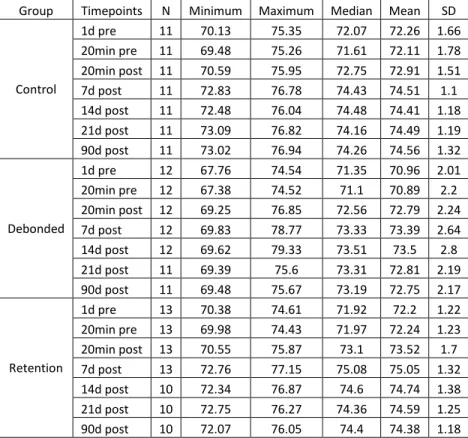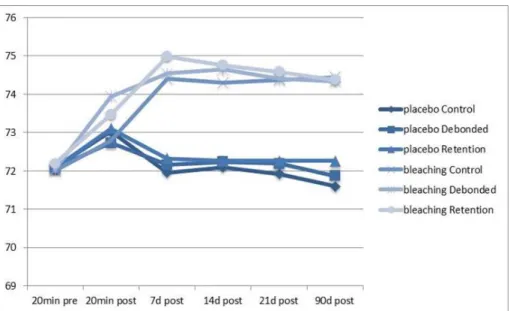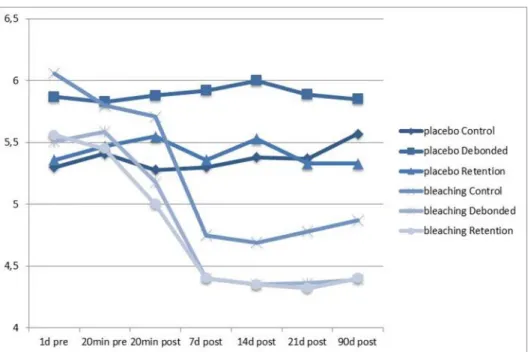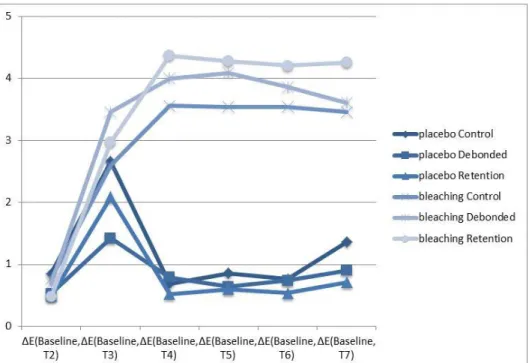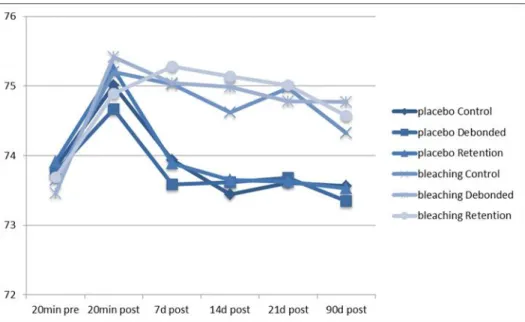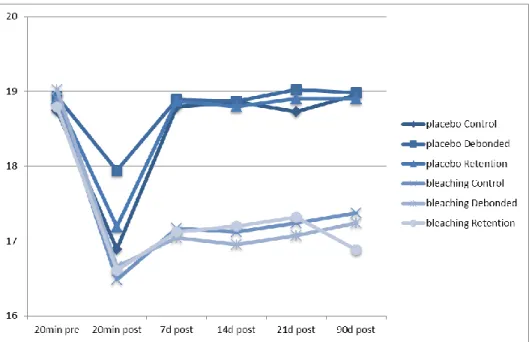First of all, I would like to express my sincere thanks to my supervisor, prof. Athanasiou for the continued support with this doctorate, for his patience and great knowledge. In addition to my supervisor, I would like to thank my co-supervisors, Professor Theodore Eliades and Professor Michael Knöesel, for their time and insightful comments and for giving me the opportunity to work and learn from them. Vasilis Karagiannis for his help with the data analysis and his prompt attention to my statistical needs.
To the faculty members of the Department of Orthodontics of Aristotle University of Thessaloniki, for their selfless commitment to teaching. My sincere thanks also go to Professor Moschos A. Papadopoulos, Director of the Department of Orthodontics, for his dedication and contribution to the specialty of orthodontics. To my parents for their love and sacrifices for me and for their continued belief in me.
Also to my brother Antonis for being a great "phd buddy". throughout this journey and uncle Nikos Koumpias for his invaluable help in editing this manuscript. Last but not least, to my loving, supportive and patient husband Pavlos and children, Celia and Socratis for their endless hours spent away from them.
ABSTRACT INTRODUCTION
Although there is an abundance of information in the literature regarding the risks and benefits of orthodontic treatment or bleaching alone, little information is available on the bleaching effect of orthodontically treated teeth. There are only four in vitro studies in the literature that refer to the influence of the binding/dissolving procedure on the bleaching efficiency. Randomization of the participants was performed by the statistician and was communicated to the author of this thesis on the first day of intervention.
Data collection began one day before the BLEACHING/PLACEBO INTERVENTION with the first spectrophotometric color measurement. Additional measurements were taken just before application of the BLEACHING/PLACEBO product (20 minutes before), just after (20 minutes after) and 7, 14, 21 and 90 days later. Analyzes of each of the previous parameters were again performed with a series of linear mixed models including the confounders "DURATION OF TREATMENT", "ANGLE CLASSIFICATION", "ORTHODONTIC TREATMENT PLAN".
In addition, the L* parameter for teeth 11 and 21 did not show statistically significant differences in the BLEACHING-CONTROL subgroup at any of the following time points, in contrast to the BLEACHING-DEBONDED and RETENTION subgroups, where bleaching produced statistically significant differences throughout the 90 days of observation. . The L* parameter for tooth 22 also did not show statistically significant differences in the BLEACHING-CONTROL subgroup at the end of the 3-month observation period, in contrast to the BLEACHING-DEBONDED and RETENTION subgroups that bleaching maintained its original response .
LIST OF ABBREVIATIONS
INTRODUCTION
Furthermore, standardized verbal means for communicating visually assessed color features are limited (Seghi et al., 1989). Dental color measuring instruments are increasingly used in clinical applications and research (Tsiliagkou et al., 2016). However, one study reported that agreement in the observer group was significantly better than that of either device (Hugo et al., 2005).
These have been reported to include translucency, opacity, iridescence, surface gloss and fluorescence (Terry et al., 2002). Although orthodontic treatment has recognized benefits, orthodontic appliances may also be associated with undesirable outcomes (Graber et al., 2004). Such fractures may provide stagnation areas for caries development or may be discolored (Zachrisson et al., 1980).
These differences became insignificant at the end of the 30 day period of monitoring (Hintz et al., 2001). It has been proposed that three possible variables in the binding/debinding procedure may influence the initial response to bleaching (Eliades et al., 2004).
MATERIALS AND METHODS
The first group (DEBONDED) included 24 consecutively selected orthodontic patients, 14 females and 10 males with a mean age of 24.8±13.4 years, who received complete orthodontic treatment with fixed appliances at the Postgraduate Orthodontic Clinic of Aristotle University of Thessaloniki and left. author. These patients had already received comprehensive orthodontic treatment with fixed appliances at the Graduate Orthodontic Clinic of the Aristotle University of Thessaloniki. A schematic diagram of the study showing patient enrollment, distribution, follow-up, and analysis of study data is shown in Figure 1.
The following day, patients received the second spectrophotometric measurement (T2) before administration of the BLEIK or placebo drugs. Twenty-thirty minutes after the administration of the BLEACH or placebo drugs, a third measurement was performed (T3). One detector area has a color CCD chip that is responsible for generating the color video image.
Regarding parameters L*, a* and b*, the data at baseline were analyzed with analysis of variance model in order to study differences between groups due to random allocation of the patients. Regarding parameter ΔΕ, the analysis was performed with a linear mixed model on the color differences between follow-up TIME POINTS and baseline measurements including the main effects and the interactions of the factors GROUP, INTERVENTION and TIME.
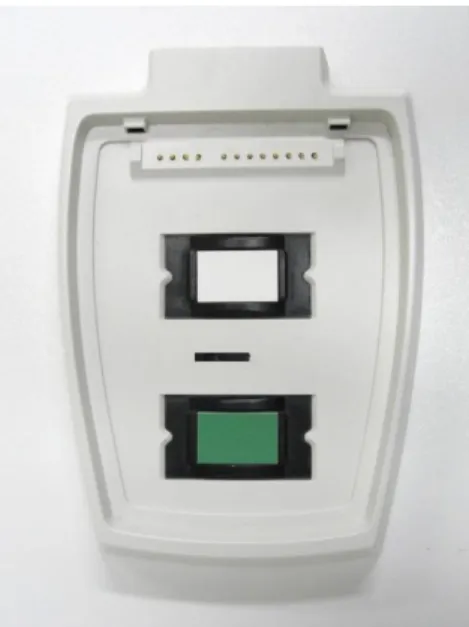
RESULTS
Results for tooth 12-b* parameter from the linear mixed model of the effect of cofounders when GROUP = DEBONDED. Results for tooth 12-b* parameter from the linear mixed model of the effect of cofounders when GROUP = RETENTION. Results for Tooth 12-ΔΕ from the linear mixed model of the effect of cofounders when GROUP = DEBONDED.
Results for tooth 12-ΔΕ from the linear mixed model of the co-founders effect when GROUP = RETENTION. Results for parameter Tooth 11-a* from the linear mixed model of co-founders effect when GROUP = RETENTION. Results for parameter Tooth 11-b* from the linear mixed model of the co-founder effect when GROUP = DEBONDED.
Results for the Tooth 11-b* parameter from the cofounder effect linear mixed model when GROUP = RETENTION. Results for tooth 11-ΔΕ from cofounder effect linear mixed model when GROUP = DEBONDED. Results for tooth 11-ΔΕ from co-founder effect linear mixed model when GROUP = RETENTION.
Results for tooth 21-a* parameter from the linear mixed model of the effect of cofounders when GROUP = DEBONDED. Results for tooth 21-a* parameter from the linear mixed model of the effect of co-founders when GROUP = RETENTION. Results for tooth 21-b* parameter from the linear mixed model of the effect of cofounders when GROUP = DEBONDED.
Results for Tand 21-b* parameter of the linear mixed model of the effect of co-founders when GROUP = RETENTION. Results for Tand 21-ΔΕ of the linear mixed model of the effect of co-founders when GROUP = DISBIND. Results for Tand 21-ΔΕ of the linear mixed model of the effect of co-founders when GROUP = RETENTION.
Results for tooth 22-L* parameter from the linear mixed model of the effect of cofounders when GROUP = DEBONDED. Results for tooth 22-L* parameter from the linear mixed model of the effect of cofounders when GROUP = RETENTION.
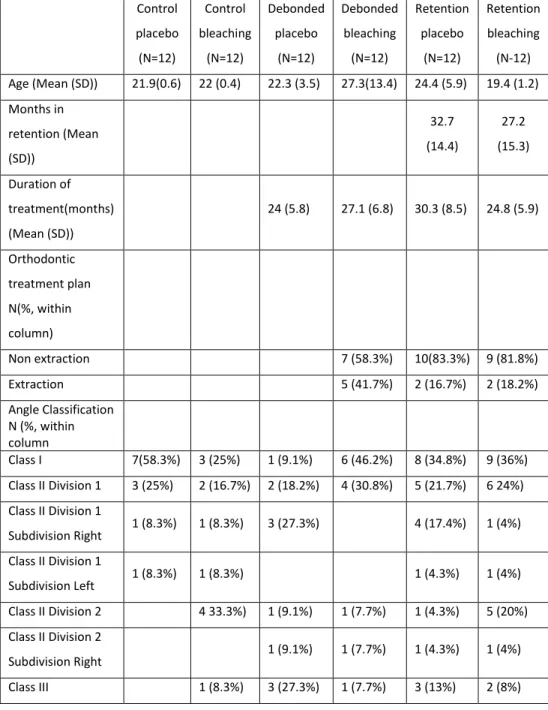
DISCUSSION Value of the study
For tooth 13 parameter b* comparisons between baseline and follow-up measurements and between levels of INTERVENTION showed that the b* value at baseline was statistically significantly greater than the mean value at all subsequent TIMES in all BLEACHING subgroups. In the examination of levels by GROUP for the BLEACHING-CONTROL subgroup, the b* value at 90d post was statistically significantly greater than the b* value at 90d post for the BLEACHING-RETENTION subgroup. Comparisons between levels of TIMEPOINTS for the PLACEBO-CONTROL GROUP showed that mean ΔΕ(21d post, 1d pre) was statistically significantly lower than mean ΔΕ(90d post, 1d pre).
For Tooth 12 parameter b* in comparisons between baseline and follow-up for all BLEIK subgroups, b* value at baseline was statistically significantly greater than b* value at all subsequent TIMEPOINTS. Comparisons between TIMEPOINTS for the BLEIK level of INTERVENTION showed that ΔΕ(20min pre, 1d pre) at baseline was statistically significantly lower than all subsequent ΔΕ(TIMEPOINT, 1d pre). For Tooth 11 parameter a*, comparisons between baseline and follow-up showed that a* value at baseline was statistically significantly greater than a*.
For parameter b* of tooth 11, in comparisons between baseline and follow-up, when INTERVENTION BLEACHING was, the b* value at baseline was statistically significantly greater than the values at all subsequent TIME POINTS in all BLEACHING subgroups. Regarding the ΔΕ values for tooth 11, when comparing the INTERVENTION levels, it was observed that the mean ΔΕ value of PLACEBO was lower than BLEACHING at all subsequent ΔΕ(TIME POINT, 1d pre) in all BLEACHING subgroups. Comparisons between levels of GROUP showed that the ΔΕ value in the BLEACHING-CONTROL subgroup was statistically significantly lower than the ΔΕ value in the BLEACHING-DEBONDED subgroup at ΔΕ(14d post, 1d pre) and ΔΕ(21d post, 1d pre).
For the L* parameter of tooth 22, comparisons between time POINTS for the BLEACHING-DEBONDED and BLEACHING-RETENTION subgroups showed statistically significant differences between the L* value at baseline and L* values. The conclusion from the comparisons between INTERVENTION levels was the same for all three GROUPS. Regarding the ΔΕ values for tooth 22 in the comparisons between INTERVENTIONS levels and TIMEPOINT levels, the PLACEBO ΔΕ value was statistically significantly lower than the BLEACHING ΔΕ value at all ΔΕ (TIMEPOINT, 1d before) follow-up in all subgroups of SELECTION.
For the L* parameter of tooth 23, when compared between PLACEBO L* INTERVENTION levels, the L* value was statistically significantly lower than WHITENING at all TIME POINTS for the BREAKDOWN and RETENTION GROUPs as opposed to the CONTROL GROUP. Across TIME POINT levels, L* at baseline was statistically significantly lower than L* at all subsequent TIME POINTS in the BLEACHING CONTROL, DISCONNECTED, and RETENTION GROUPS. Regarding the ΔΕ values for tooth 23, when compared between INTERVENTION rates and TIME POINT rates of all WHEELING subgroups, the PLACEBO ΔE value was lower than the ΔΕ WHEELING value at all subsequent ΔΕ(TIME POINT, 1d before).
CONCLUSIONS
CLINICAL SIGNIFICANCE
FUTURE ASPECTS
Clinical comparative study of the effectiveness of and tooth sensitivity to 10% and 20% home-use carbamide peroxide and 35% and 38% hydrogen peroxide in office bleaching materials containing desensitizing agents. Spectrophotometric analysis of the effectiveness of a new in-office laser-assisted tooth whitening method using the Er,Cr:YSGG laser. Formulas for whiteness and hue of the Commission Internationale de l'Eclairage: approximations in the laboratory color space.
Spectrophotometric evaluation of color changes with a new tooth whitening product in patients wearing orthodontic appliances. Beauty is in plain sight: A neurophysiological test of the averaging theory of facial attractiveness. Interdependence of shade, value, and chroma in the central location of anterior human teeth.
